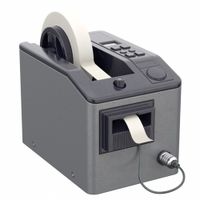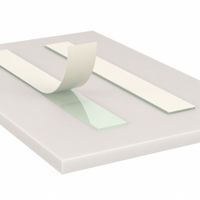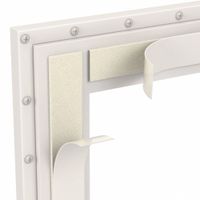Call +(254) 703 030 000 / 751 483 999 / 721 704 777
- Home
- Adhesives Sealants And Tape
- Tape
- Mounting Bonding Tape Dispensers
.....Read More
Frequently Asked Questions
What is double-sided mounting tape used for?
Double-sided mounting tape is a versatile adhesive tool used for bonding two surfaces together without the need for visible fasteners like nails or screws. It is commonly used in both residential and commercial settings for a variety of applications.
In home decor, double-sided mounting tape is often employed to hang lightweight items such as posters, pictures, and decorative pieces on walls without causing damage. It is particularly useful for renters who want to avoid making holes in walls. In offices, it can be used to affix nameplates, signs, or organizational tools to walls or desks.
In crafting and DIY projects, this tape is favored for its clean application and strong hold, making it ideal for scrapbooking, card-making, and assembling models or prototypes. It allows for precise placement and can be used on a range of materials including paper, cardboard, and lightweight plastics.
In industrial and construction settings, heavy-duty versions of double-sided mounting tape are used for more demanding applications, such as attaching trim, molding, or panels. These tapes are designed to withstand heavier weights and more extreme conditions, including temperature fluctuations and moisture.
Additionally, double-sided mounting tape is used in the automotive industry for attaching emblems, trims, and other components to vehicles. It provides a durable bond that can endure the vibrations and environmental conditions experienced by vehicles.
Overall, double-sided mounting tape is valued for its ease of use, clean application, and ability to provide a strong, durable bond between surfaces, making it a practical solution for a wide range of applications.
How strong is double-sided tape?
The strength of double-sided tape varies significantly based on its type, composition, and intended use. Generally, double-sided tape is designed to provide a strong bond between two surfaces without the need for visible fasteners. The strength is determined by several factors:
1. **Adhesive Type**: The adhesive used in double-sided tape can be acrylic, rubber, or silicone-based. Acrylic adhesives offer strong, long-lasting bonds and are resistant to temperature and UV light. Rubber adhesives provide good initial tack and are suitable for indoor applications. Silicone adhesives are used for high-temperature applications and bonding to difficult surfaces.
2. **Backing Material**: The backing material, which can be foam, film, or tissue, affects the tape's strength and flexibility. Foam-backed tapes can fill gaps and provide cushioning, while film-backed tapes offer a thin, strong bond.
3. **Surface Compatibility**: The tape's effectiveness depends on the surfaces being bonded. Smooth, clean, and dry surfaces typically result in stronger adhesion. Some tapes are designed for specific materials like metal, glass, or plastic.
4. **Environmental Conditions**: Temperature, humidity, and exposure to chemicals can impact the tape's performance. Some tapes are engineered to withstand extreme conditions, while others are best suited for controlled environments.
5. **Load and Stress**: The tape's ability to hold weight and resist shear forces is crucial. Heavy-duty tapes can support several pounds per square inch, making them suitable for mounting objects like mirrors or signs.
In summary, double-sided tape can range from light-duty options for crafts to industrial-grade tapes capable of supporting significant weight. Selecting the right tape involves considering the specific application requirements, including the materials involved and environmental conditions.
Can double-sided tape replace screws and nails?
Double-sided tape can replace screws and nails in certain situations, but its effectiveness depends on several factors, including the weight of the object, the surface material, and the environmental conditions.
Double-sided tape is ideal for lightweight objects such as posters, small picture frames, or decorative items. It works well on smooth, clean surfaces like glass, metal, or painted walls. For these applications, it provides a clean, damage-free alternative to screws and nails, which can leave holes or damage surfaces.
However, for heavier objects like large mirrors, shelves, or cabinets, screws and nails are generally more reliable. These fasteners provide the structural support needed to hold substantial weight, especially on surfaces like drywall or wood. Double-sided tape may not have the tensile strength required for such applications and could fail over time, leading to potential damage or injury.
Environmental conditions also play a role. In areas with high humidity or temperature fluctuations, the adhesive on double-sided tape may degrade, reducing its effectiveness. In contrast, screws and nails are less affected by these conditions, providing a more permanent solution.
In summary, while double-sided tape can replace screws and nails for lightweight, non-structural applications on suitable surfaces, it is not a universal substitute. For heavy-duty or long-term installations, screws and nails remain the more reliable choice.
How do you remove double-sided tape without damaging surfaces?
To remove double-sided tape without damaging surfaces, follow these steps:
1. **Heat Application**: Use a hairdryer or heat gun on a low setting to gently warm the tape. This softens the adhesive, making it easier to peel off. Hold the heat source a few inches away and move it back and forth over the tape for about 30 seconds.
2. **Peeling**: Start at one corner of the tape and slowly peel it back. Use your fingers or a plastic scraper to lift the edge. Pull the tape back at a 45-degree angle to minimize surface damage.
3. **Adhesive Removal**: If adhesive residue remains, apply a small amount of rubbing alcohol, vinegar, or a commercial adhesive remover to a cloth. Gently rub the residue until it dissolves. Test the solvent on a hidden area first to ensure it doesn’t damage the surface.
4. **Cleaning**: Once the adhesive is removed, clean the area with a mild soap and water solution to remove any remaining solvent or residue. Dry the surface with a clean cloth.
5. **Surface Protection**: If the surface is delicate, such as painted walls or wood, consider using a citrus-based adhesive remover, which is less harsh. Always follow the product instructions and test on an inconspicuous area.
6. **Final Check**: Inspect the surface for any remaining residue or damage. If necessary, repeat the adhesive removal process or touch up the surface with appropriate repair materials.
By following these steps, you can effectively remove double-sided tape while minimizing the risk of surface damage.
What is the difference between splicing tape and regular tape?
Splicing tape and regular tape differ primarily in their intended use, adhesive properties, and material composition.
Splicing tape is specifically designed for joining two ends of materials, such as film, paper, or fabric, during production processes. It is engineered to provide a seamless, durable bond that can withstand mechanical stress and environmental conditions. Splicing tapes often have a high-temperature resistance, making them suitable for processes involving heat, such as in the paper and printing industries. They are typically double-sided, allowing for a strong bond between two surfaces, and are available in various colors to aid in visibility and alignment during application.
Regular tape, on the other hand, is a more general-purpose adhesive tape used for everyday tasks like sealing, packaging, or temporary repairs. It includes a wide range of products such as masking tape, duct tape, and cellophane tape, each with different adhesive strengths and material compositions. Regular tapes are usually single-sided and are not designed to withstand the same level of stress or environmental conditions as splicing tapes. They are often made from materials like plastic, paper, or fabric, with adhesives that may not be suitable for high-temperature or high-stress applications.
In summary, the key differences lie in their specific applications, adhesive strength, temperature resistance, and material composition, with splicing tape being specialized for industrial use and regular tape serving more general, everyday purposes.
How do you apply double-sided tape correctly?
To apply double-sided tape correctly, follow these steps:
1. **Surface Preparation**: Ensure both surfaces are clean, dry, and free from dust, oil, or debris. Use a mild cleaner or alcohol wipe for cleaning and let it dry completely.
2. **Measure and Cut**: Measure the length of tape needed for the application. Cut the tape using scissors or a utility knife to the desired length. Ensure the cut is straight for better adhesion.
3. **Apply Tape to First Surface**: Peel off a small section of the tape backing to expose the adhesive. Align the tape with the edge of the first surface and press down firmly. Gradually peel off the backing while pressing the tape onto the surface to avoid air bubbles.
4. **Secure Tape**: Once the tape is applied, press down firmly along the entire length to ensure it adheres well. Use a roller or your fingers to apply even pressure.
5. **Remove Second Backing**: Carefully peel off the second backing layer to expose the adhesive on the other side. Do this slowly to prevent the tape from lifting off the surface.
6. **Align and Attach Second Surface**: Align the second surface carefully with the exposed adhesive. Once aligned, press down firmly to bond the surfaces together. Apply even pressure across the entire area to ensure a strong bond.
7. **Cure Time**: Allow the adhesive to cure as per the manufacturer's instructions. This may vary depending on the type of tape and the materials being bonded.
8. **Check Bond**: After the curing period, check the bond by gently tugging at the edges. If applied correctly, the surfaces should be securely attached.
By following these steps, you can ensure a strong and lasting bond with double-sided tape.
Are there dispensers available for double-sided tape?
Yes, dispensers for double-sided tape are available. These dispensers are designed to make the application of double-sided tape more convenient and efficient. They typically feature a mechanism that allows for easy cutting and application of the tape without the need for scissors. Some dispensers are handheld and portable, while others are designed to sit on a desk or workbench. They can accommodate various widths and lengths of tape, depending on the model. These dispensers are commonly used in offices, crafting, and industrial settings to streamline tasks that require precise and quick application of double-sided tape.




